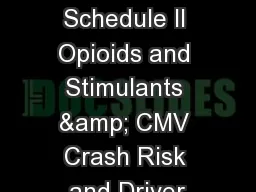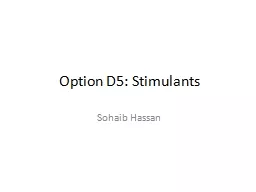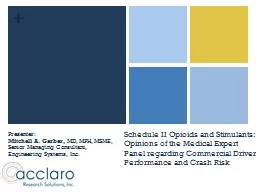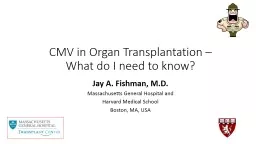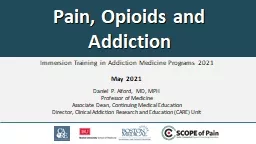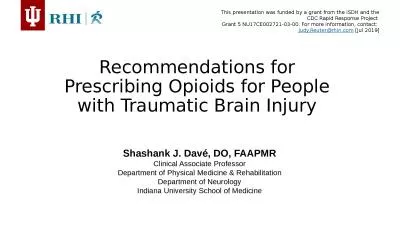PPT-Prepared by: Schedule II Opioids and Stimulants & CMV Crash Risk and Driver
Author : mitsue-stanley | Published Date : 2018-10-22
Performance A Review of Findings for the Medical Review Board July 29 2014 Roadmap Purpose Background Overview of Research Questions Search Methodology Q1a
Presentation Embed Code
Download Presentation
Download Presentation The PPT/PDF document "Prepared by: Schedule II Opioids and Sti..." is the property of its rightful owner. Permission is granted to download and print the materials on this website for personal, non-commercial use only, and to display it on your personal computer provided you do not modify the materials and that you retain all copyright notices contained in the materials. By downloading content from our website, you accept the terms of this agreement.
Prepared by: Schedule II Opioids and Stimulants & CMV Crash Risk and Driver: Transcript
Download Rules Of Document
"Prepared by: Schedule II Opioids and Stimulants & CMV Crash Risk and Driver"The content belongs to its owner. You may download and print it for personal use, without modification, and keep all copyright notices. By downloading, you agree to these terms.
Related Documents

